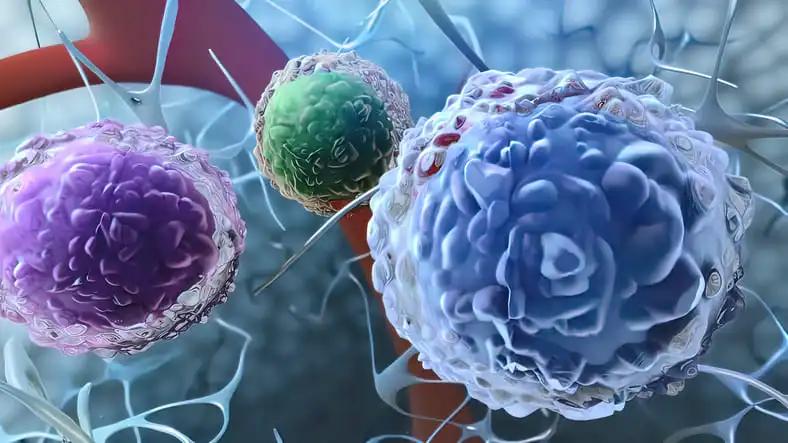KEY TAKEAWAYS
- The phase 2 ALYCANTE study evaluated the efficacy and safety of axi-cel as second-line treatment in patients with R/R LBCL, deemed ineligible for HDCT and HSCT.
- The primary endpoint was the CMR at 3 months from axi-cel infusion.
- The study reported superior efficacy of axi-cel over SOC as second-line therapy in pts intended for transplant.
The ALYCANTE study reported promising efficacy and safety of axicabtagene ciloleucel (axi-cel) as a second-line therapy for patients (pts) with relapsed or refractory (R/R) large B-cell lymphoma (LBCL) who could not take high-dose chemotherapy (HDCT) and hematopoietic stem cell transplantation (HSCT) due to age and/or comorbidities. These pts typically had limited treatment options and poor outcomes, making this finding particularly significant.
The study involved adults who had R/R LBCL for no more than 12 months after first-line chemoimmunotherapy and were ineligible for HDCT/HSCT based on the physician’s assessment. The pts had at least one of these criteria: age ≥65 years; age ≥18 years and Hematopoietic Cell Transplantation-specific Comorbidity Index (HCT-CI) score ≥3; or age ≥18 years and prior autologous stem cell transplant (ASCT) (as 1st line consolidation). The study’s primary objective was to achieve a complete metabolic response (CMR) at 3 months after axi-cel infusion, as evaluated by the investigator. Following a protocol amendment, additional 22 patients were included in the analysis.
Out of the 62 infused pts, only 40 were analyzed for the primary endpoint at the data cut-off. Their median follow-up was ten months, and the median age was 68 (range 49–81; 45% ≥70 years); 30% of the pts had an HCT-CI score of three or higher, and 52.5% were refractory to first-line treatment. Most pts (n=37), 92.5%, received bridging chemotherapy, specifically R-GEMOX, with 67.5% (n=27) refractory to this therapy. The study achieved its primary endpoint, with a three-month CMR of 70% compared to the anticipated 12% rate with SOC based on historical controls. The best OR and CR rates were 92.5% and 80%, respectively. The study’s findings indicate a median PFS of 11 months; however, the median OS remains undetermined. CRS was observed in 90% of pts, with 10% of cases categorized as grade 3-4. 55% of pts experienced ICANS, with 20% of grade 3-4. ICU admissions were necessary for approximately 30% of pts(n=12); seven pts lost their lives, with two deaths attributed to lymphoma and five to fatal infections. The early evaluation demonstrated that 64.7% of pts had a negative PET-CT, while 44.4% had undetectable ctDNA at day 14 post axi-cel infusion.
Axi-cel showed high response rates, proving an impressive second-line treatment option for LBCL pts who were not eligible for HDCT/HSCT. The final analysis, including data from 22 more pts (n = 62 vs. 40 pts at the current cut-off) and an extended follow-up period, including subgroup analysis, will be presented later.
Source: https://onlinelibrary.wiley.com/doi/10.1002/hon.3163_97
Clinical Trial: https://classic.clinicaltrials.gov/ct2/show/NCT04531046
Houot, R., Bachy, E., Cartron, G., Gros, F., Morschhauser, F., Oberic, L., Gastinne, T., Feugier, P., Dulery, R., Thieblemont, C., Joris, M., Jardin, F., Choquet, S., Casasnovas, O., Brisou, G., Cheminant, M., Bay, J., Gutierrez, F. L., Menard, C., . . . Lemonnier, F. AXICABTAGENE CILOLEUCEL AS SECOND-LINE THERAPY FOR LARGE B-CELL LYMPHOMA IN TRANSPLANT-INELIGIBLE PATIENTS: FINAL ANALYSIS OF ALYCANTE, A PHASE 2 LYSA STUDY. Hematological Oncology, 41, 147-148. https://doi.org/10.1002/hon.3163_97



